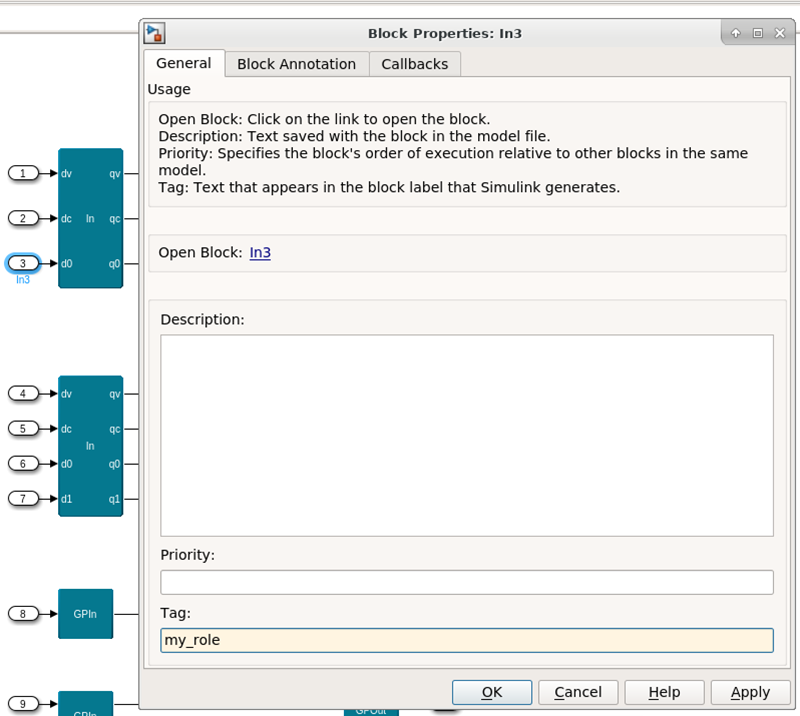Visible to Intel only — GUID: dbl1667923469539
Ixiasoft
Visible to Intel only — GUID: dbl1667923469539
Ixiasoft
4.7.4.4. Connecting Conduit Interfaces
To make it easier to connect conduit interfaces of DSP Builder designs in Platform Designer, you should:
Procedure
- Generate multiple conduit interfaces. Turn off Generate a single Avalon Conduit interface for the Platform Designer setting in the Control block.
- Assign roles to interface ports.
- Right click on the Simulink port block that is directly connected to and in the same Simulink hierarchy level as the ChannelIn, ChannelOut, GPIn or GPOut block. Then click on Properties.
- In the Tag field enter the role name you want to assign to that port. Ensure that the role names are unique within the conduit interface. Refer to Example
Figure 36. ExampleThe figure shows the role name for the In3 port is my_role.

- Click OK and save your design.
When you assign a role name to a vector or complex port, the role name applies to all elements or components of that signal. Platform Designer requires that each port has a unique role within the interface. The vector elements or complex components are concatenated together to form a single port in the hardware Tcl file using the fragment_list port property. If you do not assign a role to a vector or complex port, each element or component appears as a separate port in Platform Designer.